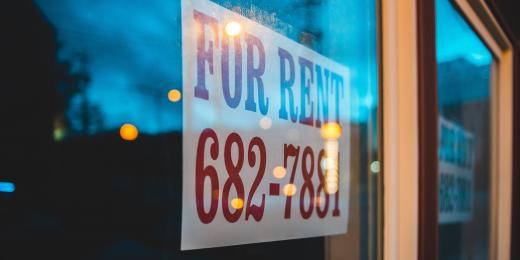Online right to rent checks launches on the 25 November 2020

Finally, some good news for landlords and tenants. The government is launching online right to rent checks from the 25 November 2020. Using the new online scheme, landlords will be able to carry out right to rent checks to make sure prospective tenants are legally allowed to rent a property from them using the Home Office checking service.
Online landlord and tenant solicitors
If you are either a landlord or a tenant and you need legal advice about any aspect of landlord and tenant law or personal immigration law then the landlord and tenant and personal immigration law teams at London based OTS Solicitors can help you. Call us on 0203 959 9123 or complete our online enquiry form to arrange a video conference, skype or telephone appointment.
Who can use the new online right to rent checking service?
Any landlord, whether they are a housing association, landlord with a buy to let property portfolio, or accidental landlord, can take advantage of the real time online right to rent checking service but, for now, the online right to rent checks can only be carried out after the 25 November 2020 on the following prospective tenants:
- Non-EEA nationals who have a biometric residence permit
- EEA nationals and their family members who have either pre-settled status or settled status under the EU Settlement Scheme
- Points based system visa holders who have been granted their Immigration status digitally.
What happens if a prospective tenant can't use the new online right to rent checking service?
If a prospective tenant doesn’t meet the current criteria to use the online right to rent checking service then to prove that they have the legal right to rent a property the tenant will still have to complete a right to rent check but it will have to be done:
- Manually by the checking of documents in accordance with the guidance
- Through making a request to the Landlord Checking Service if the prospective tenant doesn’t have any relevant documents to enable the landlord to conduct a manual check.
How will landlords and tenants use the new online right to rent checking service?
In anticipation of the launch on the 25 November 2020, the government has updated its guidance on conducting right to rent checks.
In essence, the use of the new online right to rent checking service involves:
- The prospective tenant giving the proposed landlord a share code and their date of birth to enable the landlord to access the prospective tenant’s Immigration status online
- The landlord using the right to rent checking website to access the tenant’s Immigration record and to check that the prospective tenant matches the pictures held by the Home Office as part of the Immigration record
- Although the landlord doesn’t have to ask the prospective tenant to produce any documents the landlord either needs to carry out the online right to rent check in the presence of the proposed tenant or by video link with the tenant so the landlord can see that the prospective tenant matches the picture held by the Home Office
- The online checking service should tell the landlord if the prospective tenant has a continuous or indefinite right to rent status (for example, if the prospective tenant has settled status under the EU Settlement Scheme) or if the prospective tenant has a time-limited right to rent (for example, because the tenant is in the UK on a time limited points based Immigration system visa)
- The landlord prints or keeps an electronic copy of the tenant’s Immigration status as provided on the right to rent checking website as proof that the landlord carried out the online right to rent check.
What happens if a landlord doesn’t check the prospective tenant’s picture when using the online service?
The point of using the online right to rent checking service is that the landlord is verifying the identity of their prospective tenant and their right to rent. The landlord needs to check the photographic evidence held by the Home Office by looking at the tenant (who needs to be either with them or on video link). The guidance states that if it was reasonably apparent that the person in the photograph on the Home Office online service isn’t the prospective tenant then the landlord may be liable for a penalty if it transpires that the tenant doesn’t have the right to rent but the landlord rented the property to the tenant even though the Landlord either didn’t look at the Home Office photo or ignored the fact that the photo wasn’t consistent with the proposed tenant.
Does a landlord need to do more than one right to rent check on a tenant?
A landlord does need to do more than one right to rent check on a tenant if:
- A tenancy is granted to a tenant who only has limited leave to remain in the UK and the tenant’s leave to remain expires before the end of the tenancy or, if earlier, twelve months after the right to rent check or
- The right to rent checks were carried out under the temporary Covid-19 arrangements.
If a tenant does only have limited leave to remain in the UK then it is important that a landlord keeps a record of when the next right to rent check is due to avoid falling foul of the right to rent check legislation.
Does a landlord have to carry out the right to rent check online if the prospective tenant is an EU citizen?
If a prospective tenant is an EU citizen who has pre-settled status or settled status under the EU Settlement Scheme then the right to rent check can be carried out online after the 25 November 2020 or through the tenant producing their passport to the landlord. An EU, EEA or Swiss national can use their passport as evidence of right to rent until the cut-off date for applications for pre-settled status or settled status (the 30 June 2021). A landlord can't insist that an EU citizen uses the online service, even if the EU national meets the eligibility criteria to do so. A landlord mustn’t discriminate against a prospective tenant based on whether or not the tenant is willing or able to use the Home Office online checking service.
What is the future of the right to rent check?
The Home Office is trying to make it easier for landlords to carry out right to rent checks, in part because they are so unpopular with both prospective tenants and landlords. Accordingly, in time, the Home Office plans to extend the new online right to rent checking service to other categories of prospective tenants to simplify the process.
To an extent though, the future of the right to rent checking process depends on court litigation. That’s because the right to rent scheme was challenged in the court of appeal in 2020. The court of appeal held the right to rent scheme did lead to discrimination in the rental sector against those who aren’t British citizens or who don’t have settled status in the UK. However, the court of appeal went onto determine that this level of discrimination was justified and outweighed by the public benefit in controlling Immigration. The court of appeal ruling is being taken to the supreme court so it is a case of ‘wait and see’ as to the future of the right to rent check but in the meantime it is essential that right to rent checks are carried out and , where possible, it is best that the new online service is used.
Online landlord and tenant solicitors
If you are a landlord or tenant and you need legal advice about landlord and tenant law or personal immigration law and the right to rent then the landlord and tenant and personal immigration law teams at London based OTS Solicitors can help you. Call us on 0203 959 9123 or complete our online enquiry form to arrange a video conference, skype or telephone appointment.


